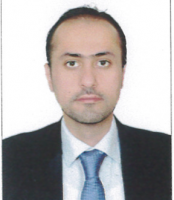
Hesham brings two decades of experience in Addiction treatment, prevention, research, policy development and training.
He holds PhD in Addictions from Institute of Psychology, Psychiatry & Neuroscience-King’s College London & a professional doctorate from Purdue University-Indiana University and has 15 publications in different areas of addictions with focus on Psychopharmacology.
Speaker at
ISSUP profile
Hesham Elarabi